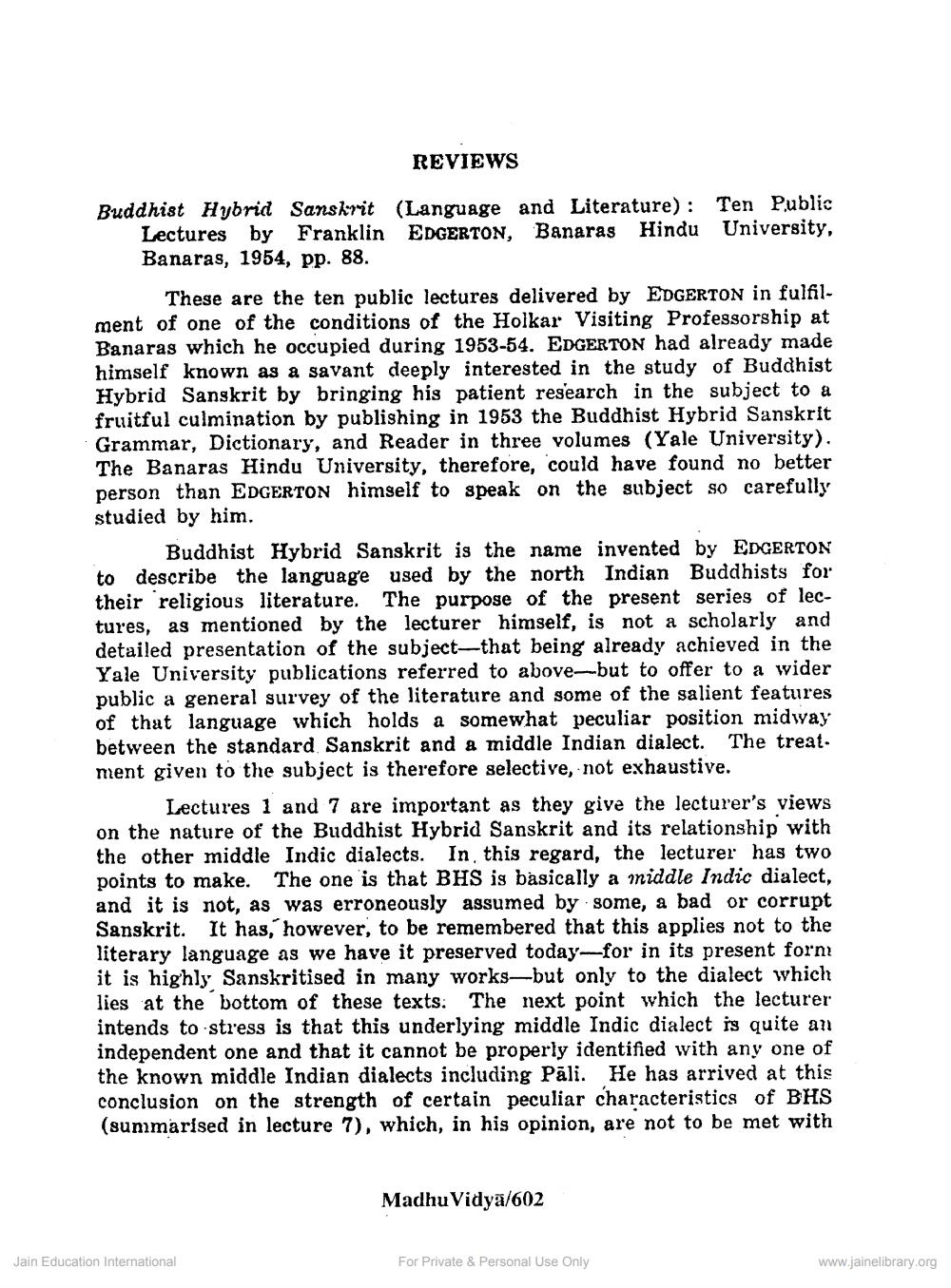________________
REVIEWS
Buddhist Hybrid Sanskrit (Language and Literature): Ten Public Lectures by Franklin EDGERTON, Banaras Hindu University, Banaras, 1954, pp. 88.
These are the ten public lectures delivered by EDGERTON in fulfilment of one of the conditions of the Holkar Visiting Professorship at Banaras which he occupied during 1953-54. EDGERTON had already made. himself known as a savant deeply interested in the study of Buddhist Hybrid Sanskrit by bringing his patient research in the subject to a fruitful culmination by publishing in 1953 the Buddhist Hybrid Sanskrit Grammar, Dictionary, and Reader in three volumes (Yale University). The Banaras Hindu University, therefore, could have found no better person than EDGERTON himself to speak on the subject so carefully studied by him.
Buddhist Hybrid Sanskrit is the name invented by EDGERTON to describe the language used by the north Indian Buddhists for their religious literature. The purpose of the present series of lectures, as mentioned by the lecturer himself, is not a scholarly and detailed presentation of the subject-that being already achieved in the Yale University publications referred to above-but to offer to a wider public a general survey of the literature and some of the salient features of that language which holds a somewhat peculiar position midway between the standard Sanskrit and a middle Indian dialect. The treatment given to the subject is therefore selective, not exhaustive.
Lectures 1 and 7 are important as they give the lecturer's views on the nature of the Buddhist Hybrid Sanskrit and its relationship with the other middle Indic dialects. In, this regard, the lecturer has two. points to make. The one is that BHS is basically a middle Indic dialect, and it is not, as was erroneously assumed by some, a bad or corrupt Sanskrit. It has, however, to be remembered that this applies not to the literary language as we have it preserved today-for in its present form it is highly Sanskritised in many works-but only to the dialect which lies at the bottom of these texts. The next point which the lecturer intends to stress is that this underlying middle Indic dialect is quite an independent one and that it cannot be properly identified with any one of the known middle Indian dialects including Päli. He has arrived at this conclusion on the strength of certain peculiar characteristics of BHS (summarised in lecture 7), which, in his opinion, are not to be met with.
Jain Education International
Madhu Vidya/602
For Private & Personal Use Only
www.jainelibrary.org




